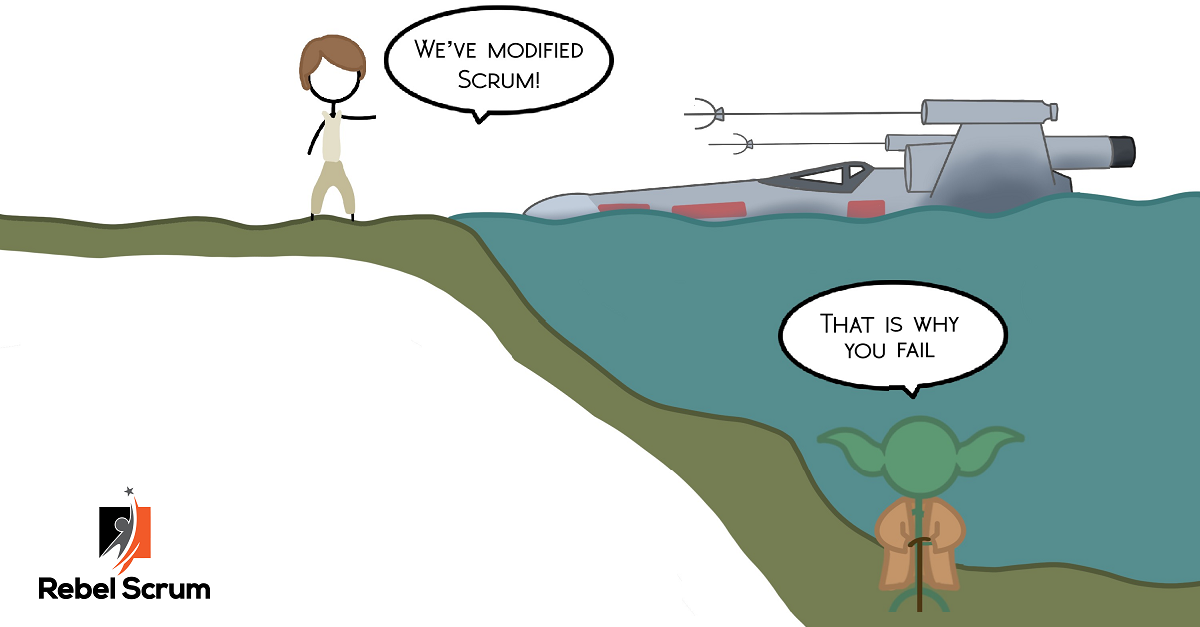
Part of the Scrum Master accountability is finding effective tools for Product Backlog management, which often means that the Scrum Master is accountable for setting up the Scrum Board. A Scrum board, also known as a Kanban board, is a visual tool often used by Agile teams to track and manage work items, often represented as sticky notes or digital cards, as they progress through various stages of a project or sprint. Typically divided into columns representing different workflow stages, such as "To Do," "In Progress," and "Done," a Scrum board provides a clear and real-time visualization of tasks, enabling team members to understand the status of work, identify bottlenecks, and prioritize effectively.
There are many ways to create a Scrum board. In-person teams may use a physical whiteboard with sticky notes that progress across the board from “To Do” to “Done”. However, remote or hybrid teams - and even in-person teams - will often prefer an electronic Scrum board.
There are many popular software applications which can be used to create a Scrum board. The most basic Scrum Board could be something as simple as a shared Excel spreadsheet accessible by all Scrum Team members.
Often, though, Scrum Teams will prefer something with more robust functionality and features which can help Scrum Teams more effectively visualize their work. In this article, we'll explore some popular tools and apps, including Jira, Team Foundation Server, Rally, and others, that Scrum Masters can leverage to help teams visualize their work, increase Transparency and increase team efficiency.
Jira
Jira is arguably one of the most popular project management tools for Agile teams. It offers a wide array of features tailored for Scrum Masters, including sprint planning, backlog management, and real-time collaboration. Scrum Masters can use Jira to create and manage user stories, track team progress, and visualize sprint burndown charts.
Strengths:
- Highly customizable and adaptable to various Agile frameworks.
- Offers extensive add-ons and integrations to enhance functionality.
- Robust reporting and analytics for tracking team performance.
Weaknesses:
- Can be complex and overwhelming for small teams or those new to Agile.
- Pricing can be a concern for smaller organizations.
- Requires significant configuration for optimal use.
Team Foundation Server (TFS)
TFS, now part of Azure DevOps, is a robust platform that provides tools for version control, build automation, and Agile project management. Scrum Masters can use TFS to manage backlogs, track work items, and facilitate seamless integration between development and operations teams.
Strengths:
- Seamless integration with other Microsoft tools and technologies.
- Well-suited for organizations already invested in the Microsoft ecosystem.
- Robust version control and build automation capabilities.
Weaknesses:
- May lack some Agile-specific features found in dedicated Agile tools.
- User interface and usability have been known to be less intuitive compared to some other tools.
- Historically, it was Windows-centric, which may not align with cross-platform needs.
Rally (now known as Broadcom Rally, formerly CA Agile Central)
Rally is a comprehensive Agile project management tool that offers Scrum Masters a centralized platform for managing and tracking work. It includes features such as sprint planning, release tracking, and portfolio management, making it a valuable tool for Scrum Masters overseeing multiple teams or large-scale projects.
Strengths:
- Comprehensive Agile features, suitable for large enterprises.
- Strong portfolio management capabilities .
- Robust reporting and analytics to support data-driven decisions.
Weaknesses:
- Can be expensive for smaller organizations or teams.
- Complexity may require a learning curve for new users.
- Customization options, while powerful, can be overwhelming.
ServiceNow
ServiceNow is an enterprise-level platform known for its IT service management capabilities. Scrum Masters can leverage ServiceNow's flexibility to adapt Agile practices, manage backlogs, and track project progress, particularly in organizations where IT service management and Agile development intersect.
Strengths:
- Enterprise-level IT service management capabilities.
- Customizable workflows to adapt to Agile practices.
- Strong incident and problem management features.
Weaknesses:
- May be seen as more oriented toward IT service management than Agile frameworks.
- Customization can require technical expertise.
- Licensing costs can be high for extensive use outside of IT service management.
Trello
Trello is a simple, visually oriented project management tool that many Scrum Masters find intuitive and user-friendly. It's particularly useful for managing small to medium-sized Agile teams and projects. Scrum Masters can create boards for sprint planning, backlog management, and task tracking.
Strengths:
- Simplicity and ease of use, making it great for small teams and beginners.
- Visual and intuitive interface.
- Free or affordable pricing tiers.
Weaknesses:
- May lack advanced features required by larger or more complex projects.
- Limited reporting and analytics compared to some other tools.
- May become cluttered and less effective for larger teams or projects.
Monday.com
Monday.com is a versatile work operating system that provides Scrum Masters with a highly customizable platform for Agile project management. It supports sprint planning, task assignments, and timeline tracking, making it suitable for teams of various sizes and complexities.
Strengths:
- Highly customizable work operating system.
- Versatile and suitable for various project management needs.
- Visual and user-friendly interface.
Weaknesses:
- Pricing can become expensive for large teams or organizations.
- May require significant setup and customization.
- Reporting and analytics features may not be as robust as specialized tools.
Confluence
Often used in conjunction with Jira, Confluence is a powerful collaboration tool for documenting processes, creating team wikis, and sharing knowledge. Scrum Masters can utilize Confluence to maintain a central repository of Agile best practices, meeting notes, and documentation.
Strengths:
- Documentation and Knowledge Sharing: Great for creating team wikis and sharing information.
- Integration with Jira: Links project documentation to specific issues.
- Customization: Can be tailored to suit different team needs.
Weaknesses:
- Focused on Documentation: Less suitable for detailed project management.
- Complexity for Beginners: New users may find it complex.
- Pricing: Can be costly for large organizations.
Slack
Communication is a cornerstone of Agile methodologies, and Slack is a popular choice for team communication and collaboration. Scrum Masters can create dedicated channels for teams, conduct asynchronous discussions, and integrate with other tools to receive real-time notifications.
Strengths:
- Real-Time Communication: Excellent for team messaging and quick decisions.
- Integration Ecosystem: Offers numerous third-party integrations.
- Search and Archive: Robust search functionality for finding past conversations.
Weaknesses:
- Information Overload: Can lead to distractions if not managed.
- Lack of Deep Project Management: Integrates with project management tools but lacks their features.
- Cost for Large Teams: Expenses can grow with extensive usage.
Miro
Miro is an online collaborative whiteboarding platform that Scrum Masters can use for activities like sprint retrospectives, story mapping, and brainstorming. It provides a virtual space for teams to visually collaborate, which is especially valuable for remote or distributed teams.
Strengths:
- Visual Collaboration: Ideal for brainstorming, mind mapping, and sprint retrospectives.
- Cross-Platform Accessibility: Works well for remote or distributed teams.
- Integrations: Offers integrations with tools like Jira and Slack.
Weaknesses:
- Learning Curve: Some may find it initially complex.
- Pricing: Costs can add up for larger teams.
- Limited Project Management: Lacks in-depth project management features.
Conclusion
Each of these tools has its unique strengths and weaknesses, and the choice of tool should align with the specific needs, scale, and preferences of the Scrum Team and the organization as a whole. Consider factors such as team size, budget, existing software infrastructure, and the complexity of your team’s efforts as well as the interfaces required for other internal software teams and tools when selecting the most suitable tool.
The Scrum Master accountability is multifaceted, demanding proficiency in Agile practices, team facilitation, and effective communication. The right tools and software can significantly aid in these responsibilities, enabling Scrum Masters to streamline their work and enhance team productivity. Whether it's managing backlogs, conducting Sprint Planning, or fostering collaboration, the tools mentioned here, including Jira, Team Foundation Server, Rally, and others, provide essential support for Scrum Masters on their journey toward Agile success.
As the Agile landscape continues to evolve, Scrum Masters must stay adaptable and consider incorporating new tools and software into their toolkit as needed. The key is to leverage these tools to empower teams, foster transparency, and drive continuous improvement—ultimately, delivering better results for the organization and its stakeholders.
To learn more about the Scrum Master accountability, signup for Rebel Scrum’s upcoming Professional Scrum Master class. This class goes beyond the basics. As a Scrum Master, you’ll understand the ‘why’ behind the Scrum framework. It’s a powerful class that asks hard questions and arrives at answers through hands-on learning that’s practical and immediately applicable.

